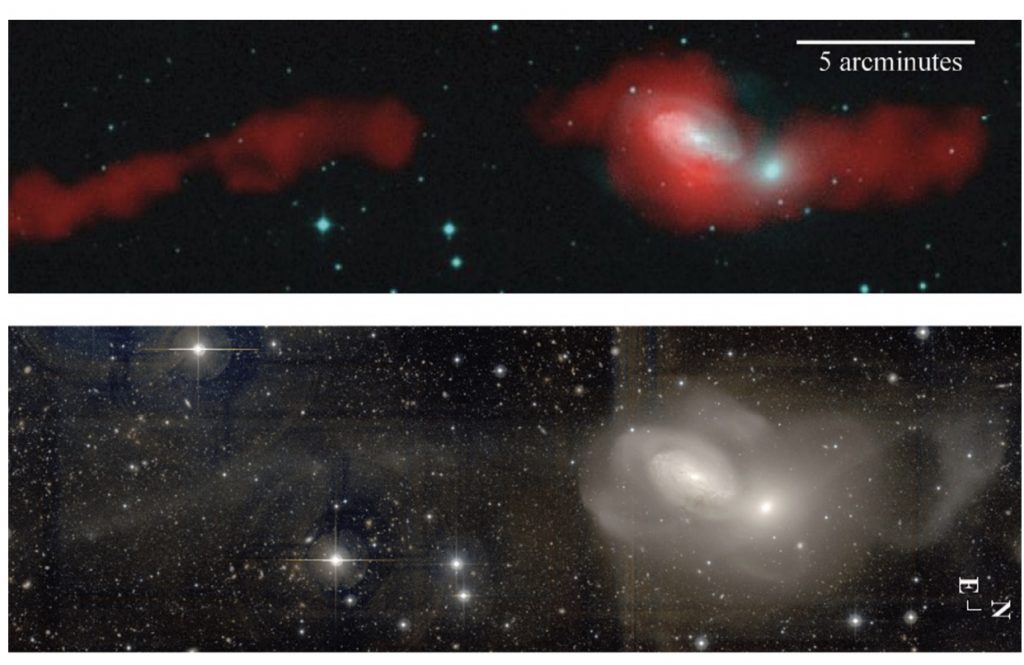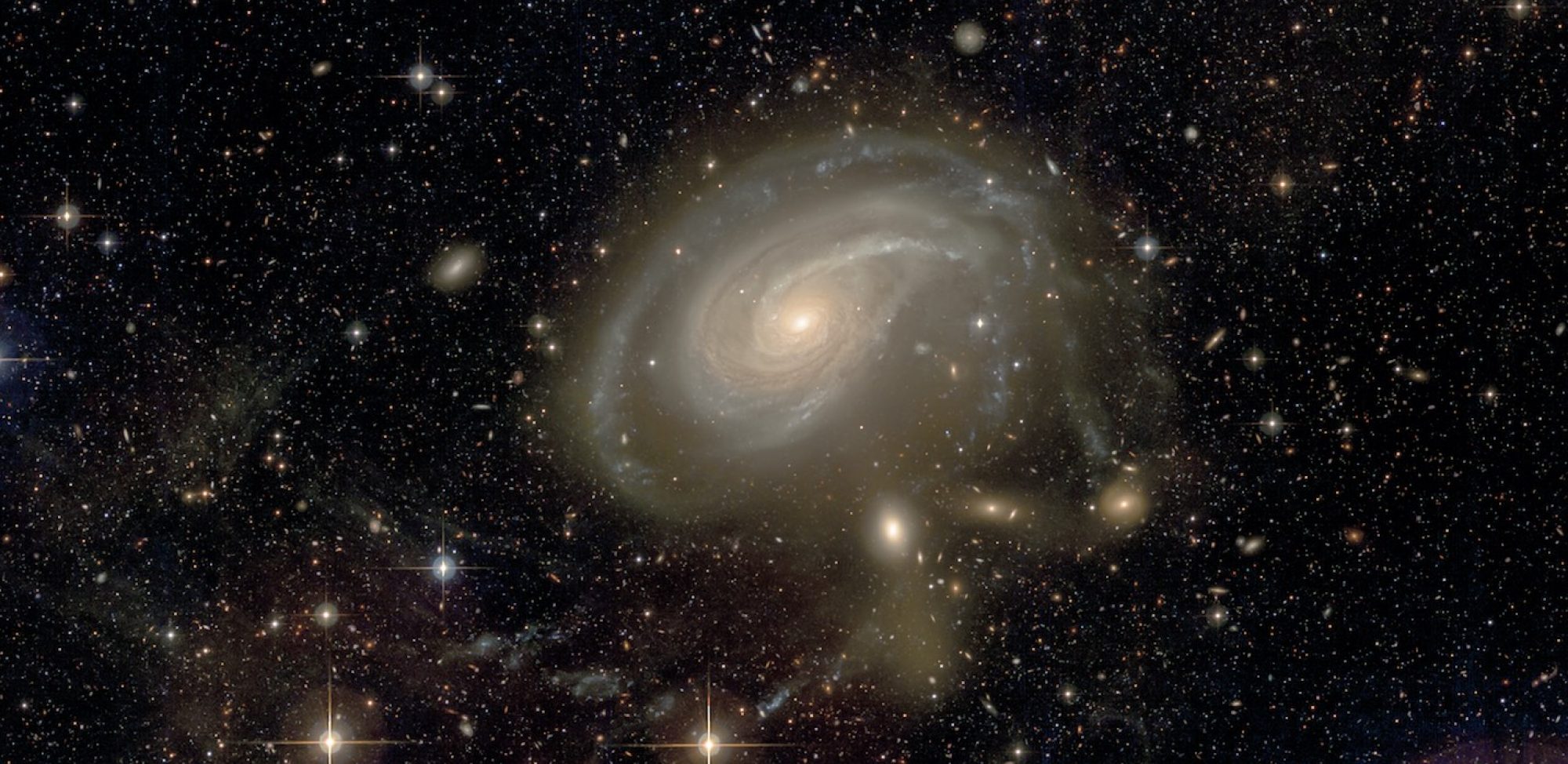
We present archival Spitzer photometry and spectroscopy and Herschel photometry of the peculiar “Green Valley” elliptical galaxy NGC 3226. The galaxy, which contains a low-luminosity active galactic nucleus (AGN), forms a pair with NGC 3227 and is shown to lie in a complex web of stellar and H I filaments.
Imaging at 8 and 16 μm reveals a curved plume structure 3 kpc in extent, embedded within the core of the galaxy and coincident with the termination of a 30 kpc long H I tail. In situ star formation associated with the infrared (IR) plume is identified from narrowband Hubble Space Telescope (HST) imaging. The end of the IR plume coincides with a warm molecular hydrogen disk and dusty ring containing 0.7-1.1 × 107 M ⊙ detected within the central kiloparsec. Sensitive upper limits to the detection of cold molecular gas may indicate that a large fraction of the H2 is in a warm state. Photometry derived from the ultraviolet (UV) to the far-IR shows evidence for a low star-formation rate of ~0.04 M ⊙ yr-1 averaged over the last 100 Myr. A mid-IR component to the spectral energy distribution (SED) contributes ~20% of the IR luminosity of the galaxy, and is consistent with emission associated with the AGN. The current measured star formation rate is insufficient to explain NGC 3226’s global UV-optical “green” colors via the resurgence of star formation in a “red and dead” galaxy. This form of “cold accretion” from a tidal stream would appear to be an inefficient way to rejuvenate early-type galaxies and may actually inhibit star formation.
Published in Appleton et al., 2014, ApJ 797, 117

